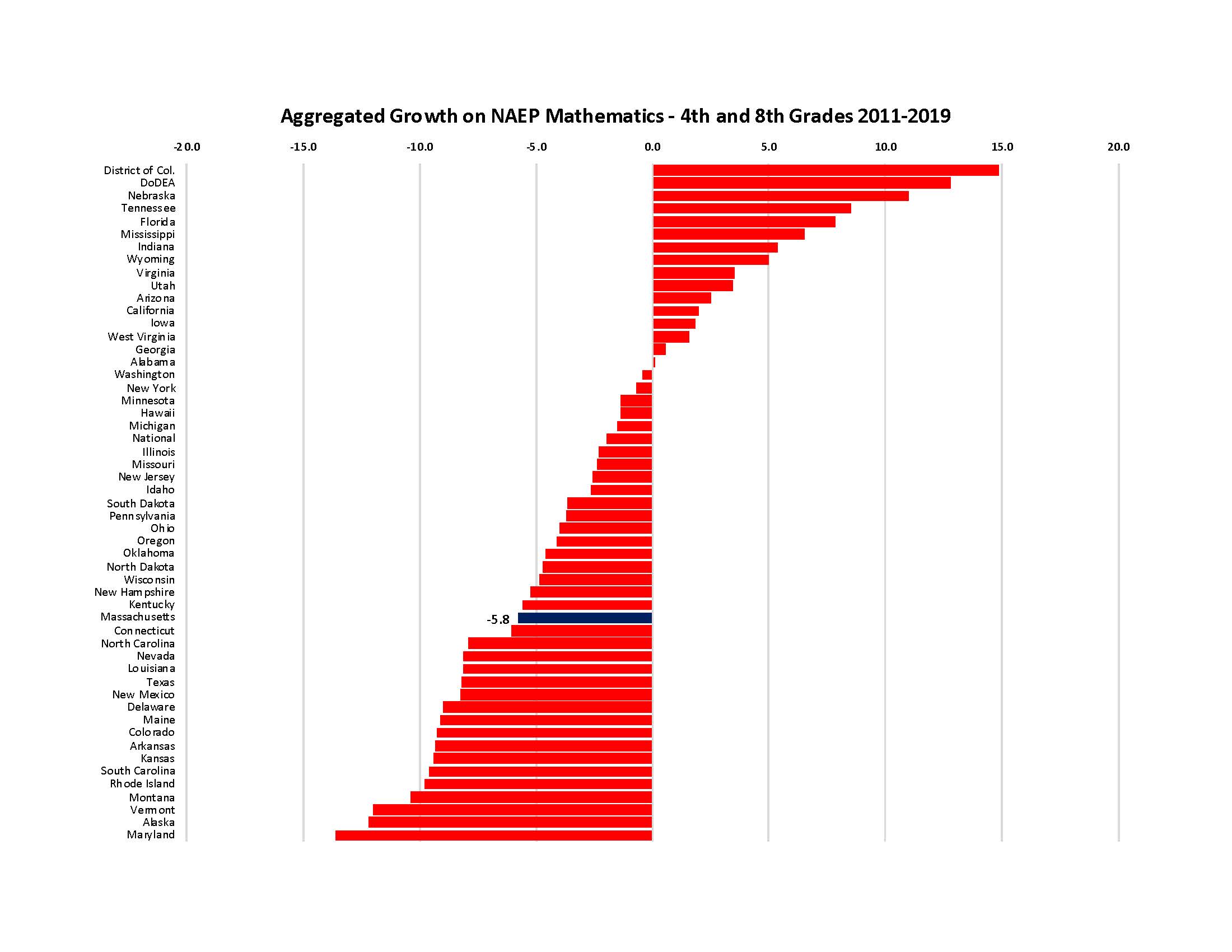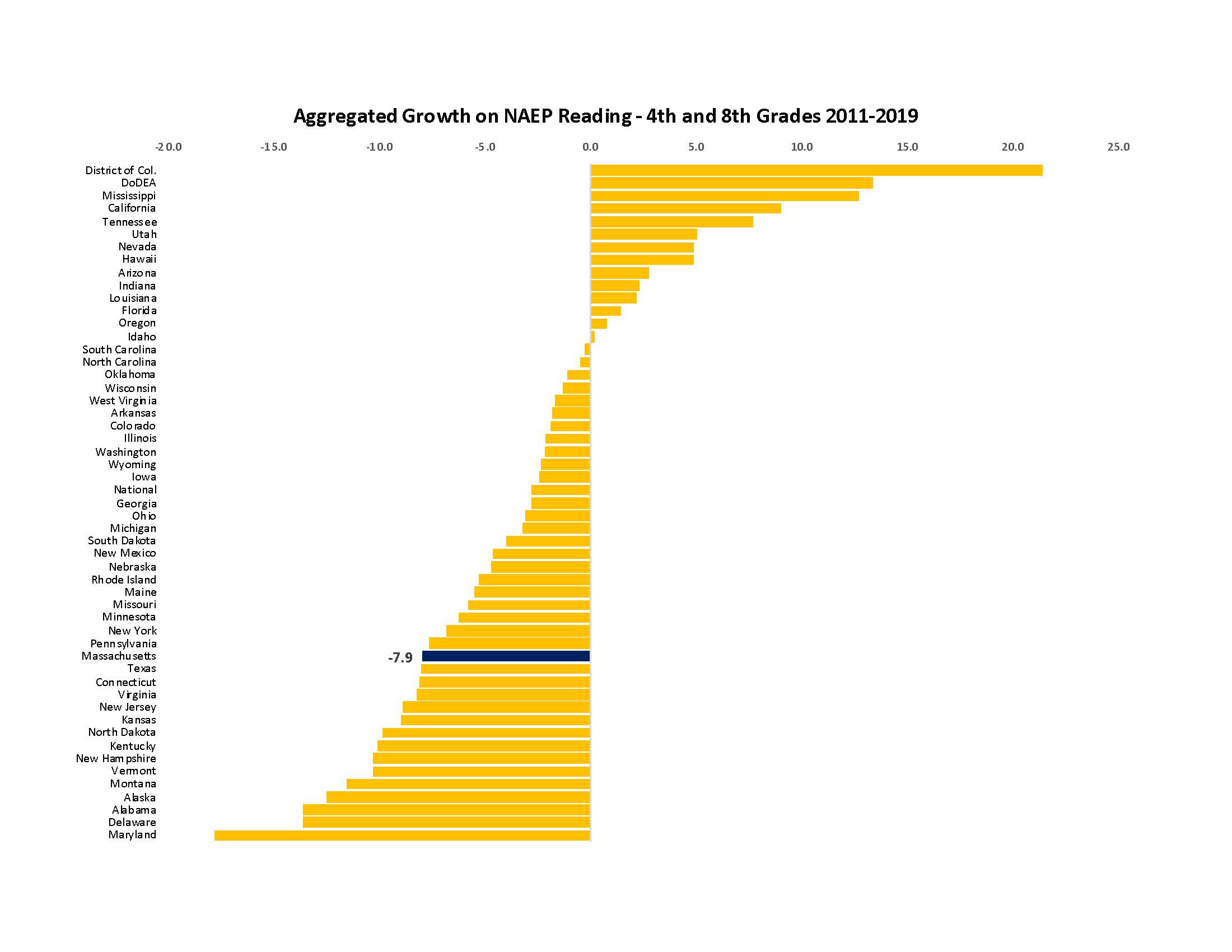Between the State and the Schoolhouse: Understanding the Failure of Common Core, Tom Loveless, Harvard Education Press, 2021, pp. 224, $28.90 softcover.
Proposed national K-12 academic standards in English and math known as Common Core were perhaps the biggest news story in public education since A Nation at Risk published forty years ago. Education researcher and author Tom Loveless’s Between the State and the Schoolhouse: Understanding the Failure of Common Core is an important historical narrative because it offers an even-handed and detailed review of the effort and its ultimate failure. Now we must hope that future generations of education policy makers will learn the lessons of a debacle that was ill-conceived from the start.
Common Core was cloaked in the language of better standards for all. In 2009-10, at the peak of debates over whether states would adopt the standards (over forty did, although many later reversed course), some of its seemingly countless supporters spoke of Common Core as a tool for nationalizing the success of Massachusetts, which was at the time the nation’s unquestioned public education leader. A landmark 1993 Massachusetts Education Reform Act (MERA) law had combined a significant infusion of new state money tied to high academic standards, a testing requirement for high school graduation, charter public schools, and accountability throughout the entire system.
In MERA’s aftermath, state SAT scores rose for thirteen consecutive years. In 2005, the Bay State became the first to have its students score tops in the country in all four categories tested on NAEP. By 2007, Massachusetts eighth graders even tied for first in the world on international science testing. Between 2005 and 2019, no state achieved the historic results Massachusetts did.
But when compared to the proven, high academic quality of the Massachusetts standards, Common Core fell far short. The English standards reduced the amount of classic literature, drama, and poetry students read by more than half. Not long before the Common Core was drafted, the National Mathematics Advisory Panel issued its report, which found that Algebra I was the key to higher math study, and that students should take the course by eighth grade. Students in Massachusetts and California had been doing so, but that changed under Common Core.
In fact, Common Core was never about excellence or competing internationally; it was about helping low-performing states improve. It was an admirable goal—until it became clear that it would also cause performance in high-performing states to decline. This was no strategy to be globally competitive, as A Nation at Risk had called for.
Common Core standards were indeed an improvement over what existed in some low-performing states, but inferior to what was already in place in Massachusetts and other higher performing states. Indiana, Minnesota, California, and Utah, for example, had superior math standards, but Common Core sought to brush aside exemplary state standards in favor of the same Beltway banalities about nationalizing workforce development that have plagued K-12 education for generations.
The graphs below show that in the period from adoption of Common Core until just before the COVID pandemic, NAEP scores improved in about thirty percent of states and fell in about seventy percent. Correlation is not causality, but it’s hard to miss the fact that the states that improved were largely very low-performing to begin with, while most better-performing states were among the two-thirds that experienced academic declines in both reading and math.
In Massachusetts, for example, aggregated fourth- and eighth-grade NAEP math scores fell by 5.8 points between 2011 and 2019, more than in all but seventeen states. Reading was even worse. The decline of 7.9 points was larger than in all but fourteen states.


The impulse to punish high achievers has for too long dogged K-12 public education policy and caused the United States to be less competitive in the global economy.
The reality is that the architects of Common Core, or any national standards effort, couldn’t replicate the success of states like Massachusetts because, constitutionally, the federal government has no control over key variables such as state and local funding (which comprises ninety percent of K-12 financing), teacher testing, and other state accountability mechanisms. Rather than attempting to replicate high academic expectations, they doubled down on mediocrity to corral as many states as possible into Common Core’s uniformity.
In the process, they ignored the hard-won efforts of high standard, high-performing states and ignored a major reason for their success—the parents, localities, state lawmakers—who pay for the work and should have a direct say in the educational destinies of their children. It turns out that local self-government matters.
After a decade Common Core has achieved few tangible results for students. A 2020 Pioneer Institute study found that in the years following its implementation, national achievement gaps also grew, with the largest performance declines occurring among students at and below the twenty-fifth percentile.By prioritizing equity over academic excellence, Common Core achieved neither.
While Common Core’s development was organized by the Chief State School Officers, the National Governors Association, and Achieve, Inc., the Obama administration pushed for it by offering $3 billion in “Race to the Top” grants to key states that adopted the standards. This came during trying budgetary times in the aftermath of the 2008 financial crisis.
None of Common Core’s largely D.C.-based advocates (whose roots go back to the first Bush and the Clinton administrations) seemed to mind that three federal laws (two of three signed by Democratic presidents Lyndon Johnson and Jimmy Carter) explicitly prohibit the U.S. Department of Education from funding, directing, or controlling states’ curricula, standards, or testing protocols.
Nationalizing the Common Core effort resulted in the involvement of special interest groups that former U.S. Secretary of Education Bill Bennett sardonically called “the blob.” The major funder of Common Core was the Bill & Melinda Gates Foundation, which spent over $200 million to support it, investing in states and the same non-profits that had failed time and time again to deliver meaningful reform. The Obama Administration’s Race to the Top grants and waivers from No Child Left Behind accountability provisions provided the carrots and the threat of withholding federal Title I funds for reading provided the stick. This was the heart of Common Core’s entertaining claims of being “state led.”
That kind of money can influence a lot of policy actors, and few in the nonprofit edu-sphere said no to this once in a generation Gates-funded bonanza. For example, when the Massachusetts Department of Elementary and Secondary Education commissioned three entities to compare Common Core to existing state standards, either the entities or the researchers they retained to conduct the study—and in at least one case both—had received Gates Foundation funding. It’s not shocking to learn that each of the analyses came out in favor of Common Core.
Loveless does an excellent job of breaking down the massive challenge of implementing an initiative as sprawling as Common Core. In 2009, few doubted that Common Core would be broadly adopted, but, Loveless writes,
For a policy with a 95 percent probability of clearing a single decision point, it takes fourteen decision points for the odds to drop below 50 percent . . . Michael Q. McShane calculated seventeen decision points for Common Core, most at the state level alone, and reported that a state official took him to task for undercounting the true number.
One small criticism regards Loveless’s view that standards are “overrated as an instrument of school reform.” While they are certainly not the only important reform tool, the fact that performance often improved in states where Common Core represented stronger standards than what had been in place and declined in those where it was inferior to what preceded it suggests that standards are at least somewhat significant.
This is especially true in the case of Massachusetts, when high academic standards are aligned with the state tests tied to students’ graduation requirements, as well as with the academic content found in the State’s liberal arts and STEM-centric teacher tests.
K-12 public education’s seeming inability to dramatically improve national and international outcomes is one of the most difficult public policy issues of our era. While Massachusetts delivered admirable and historic results its designers never claimed or advocated that every other state adopt the Bay State’s reform model.
Rather, in the same way that Massachusetts reform leaders judiciously chose a few state levers—standards, student and teacher tests, charter schools, and additional funding—they also left much of the actual school reform work up to local districts, schools, teachers, and parents. After all, these are the people most connected with the educational needs of their children.
There’s a lesson here for policymakers interested in learning it. Each state will need to direct and order its own educational reforms—be it a portfolio of school choice options, academic standards and tests, or funding formulas best suited to their educational needs. This was the Founders’ plan for the country’s self-government, as well as their vision of K-12 education for our republic.
Make no mistake, as the national role in K-12 education has grown across the last half century—with its hundreds of billions annually spent and attendant expansion of bureaucracy, regulations, and red tape—academic quality has declined, the country’s educational outcomes have nosedived, and our democracy itself has spiraled. This has been especially true in the largest urban school districts where the need is the greatest, including New York, Los Angeles, Chicago, Houston, Atlanta, and Boston.
Common Core cost state and federal taxpayers hundreds of billions of dollars, only to have a negative effect on both overall student performance and equality. It was built on a false belief that the cure for weak academic quality was nationalization, bureaucratic control, and decision making far removed from the citizens, teachers, and students it was meant to serve.
With this book, Tom Loveless does a great service by laying out the rise and fall of this failed national initiative in a way that holds clear lessons for education policy makers both present and future. Now it’s time for the Beltway to listen.
Charles Chieppo is a senior fellow and Jamie Gass is the director of PioneerEducation at Pioneer Institute, a Boston-based think tank.
Photo by Nguyen Dang Hoang Nhu on Unsplash














